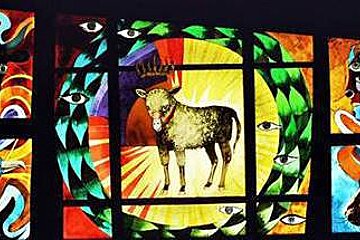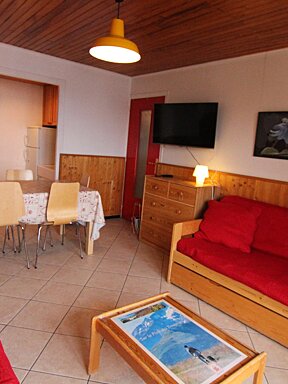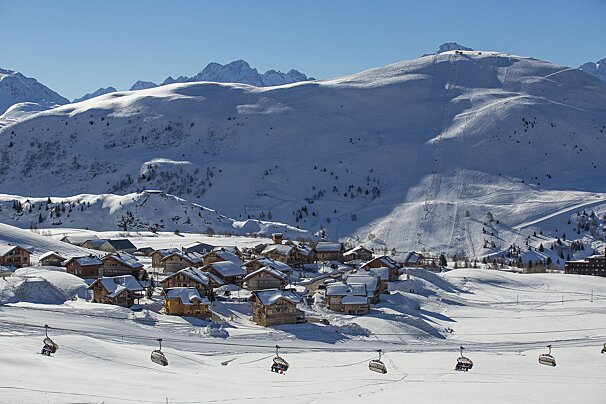
© SeeAlpedHuez.com
Notre Dame des Neiges Church
Church with 13 stained glass windows
This church's architecture, stained glass windows and organ are great works of art. Come to see them! The church is open every day. The museum of Huez and Oisansalso organises free visit once weekly all year round (rendezvous on the church square).
The idea of replacing the old wooden church by a new bigger one came during the run-up to the 1968 Winter Olympic Games (which took place in the region). The new church was built facing the Meije Mountain and it was the parish priest, of Dutch origin, Jaap Reuten (ministry from 1964 to 1992) who was the driving force behind the project, seeing the church of Notre-Dame des Neiges completed in 1970.
The building of the church was funded by the generosity of the congregation as well as many benefactors. Three charitable associations were created in 1967 for the construction of the building, the stained glass windows and for the purchase of a church organ. The associations merged in 2004 and St Nicolas’ Crypt was inaugurated and consecrated on 30th December 1968, followed by the church on 6th December 1969. The roof was completed in 1970 and the thirteenth and last stained glass window was fitted in 2002. The church was built using the simplest materials (concrete, for the structural supports, copper for the roof, wood for the joists, and clear glass for the dome). The roofing was done by Charles Verguet.
The project was first thought of when Jean Le Boucher vowed to build a new church in honour of Mary during fighting on the slopes of the Alpette mountain (14th August, 1944). A certain number of symbolic elements have been highlighted by the resolutely modern architecture of Jean Marol.
The first symbolic element is that of God having put up his tent in Alpe d’Huez, as Abraham did in the desert; the roof follows the rounded form of this vast refuge. Entrance to the building is made by the choir stalls; the long aisle and narthex are unlit, allowing a contemplative darkness. The centre of the church is a well of light. The shaft of this well is also the pole that holds the tent-like structure of the building up. The congregation is sat around the well of light, as if around a camp fire. The central pole is exactly aligned with the two other church towers of the town, indicating that religion, by its very nature, provides an essential link between people. The crypt is just below the well of light.
The thirteen wonderful stained glass windows stained glass windows are the work of the famous artist, Arcabas.




























